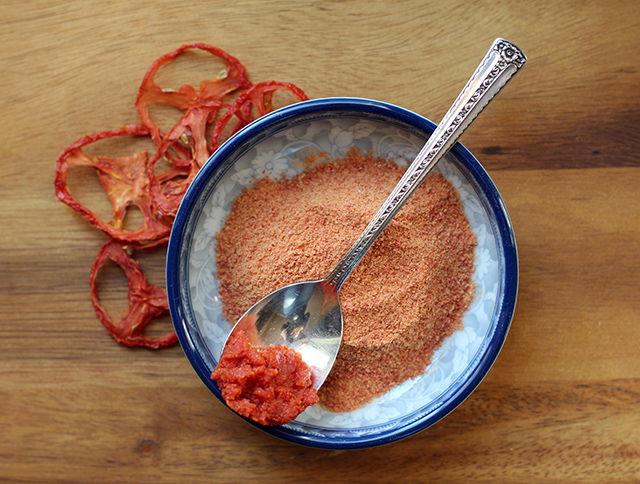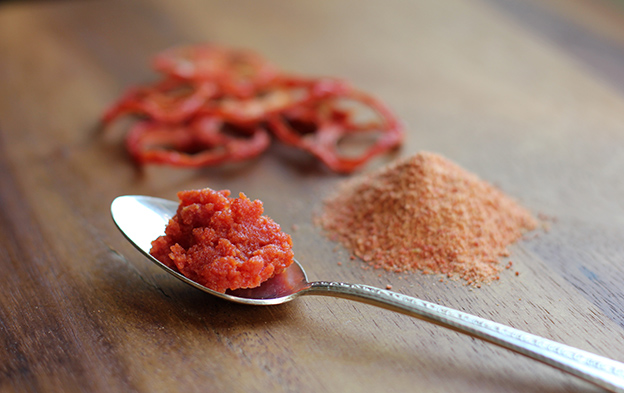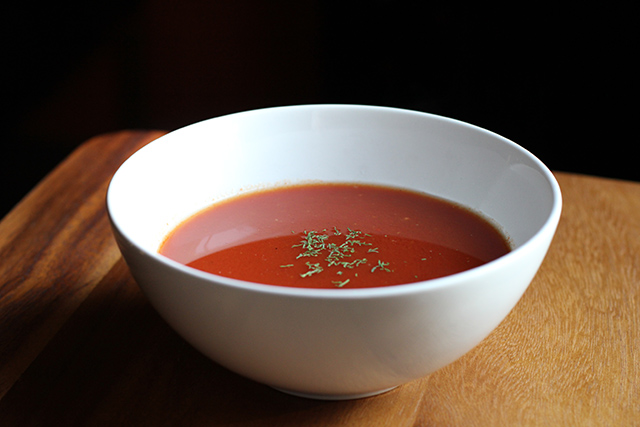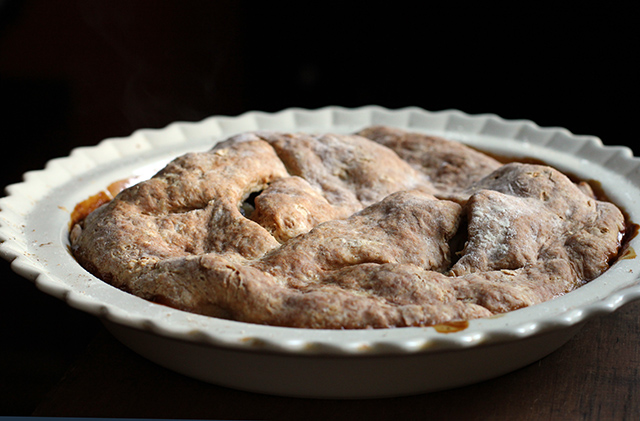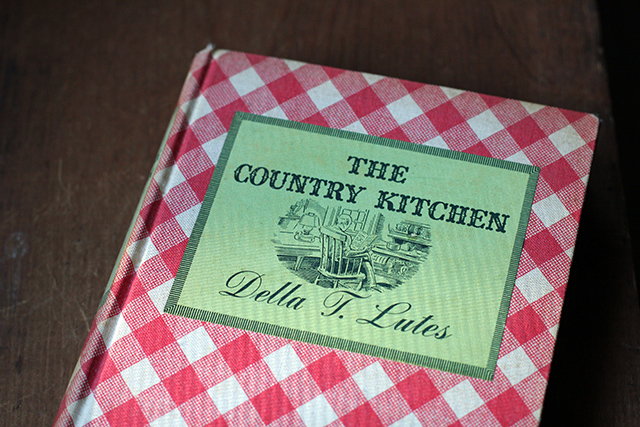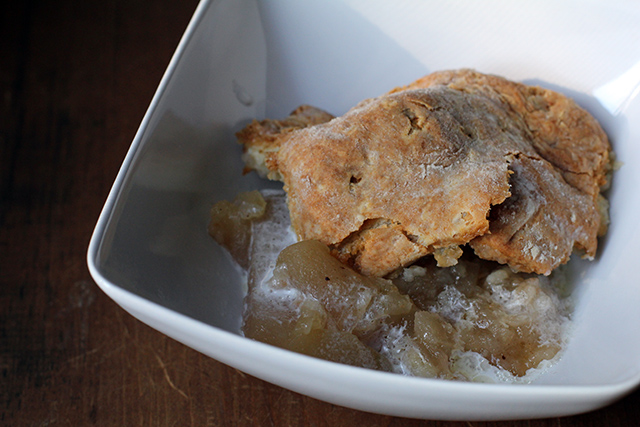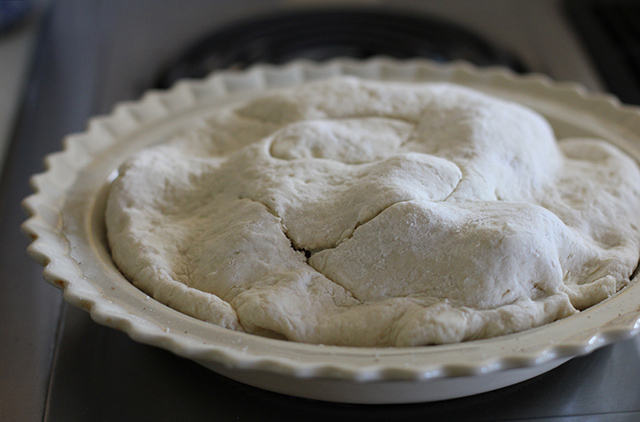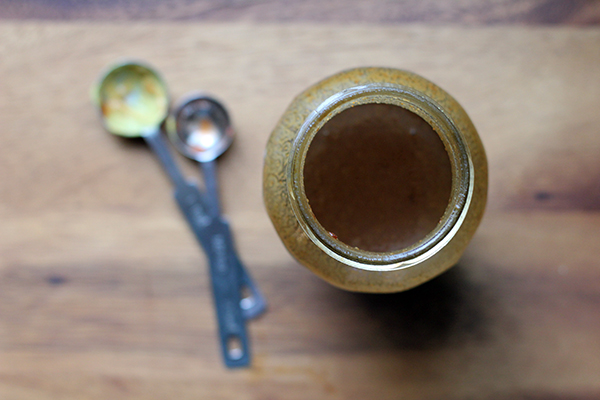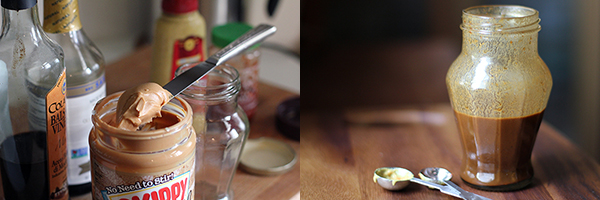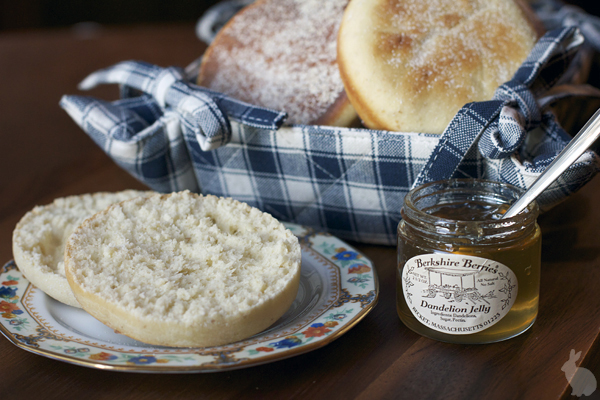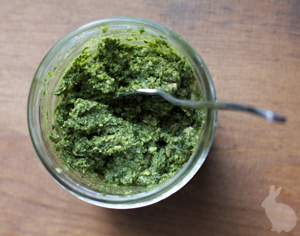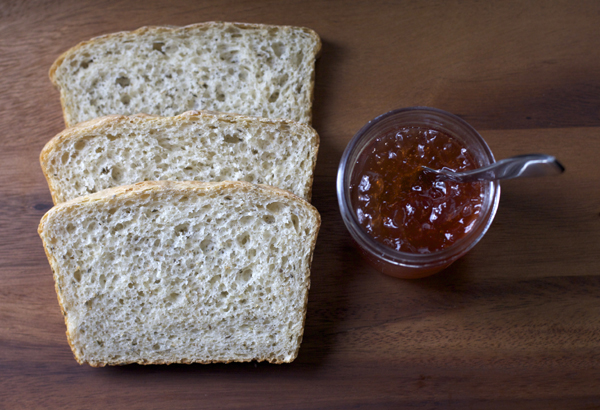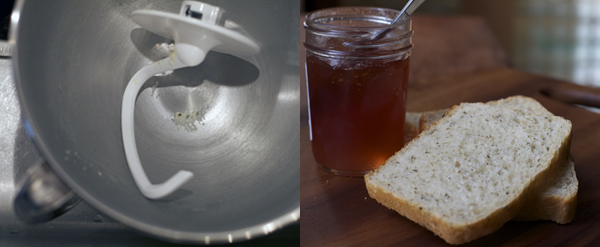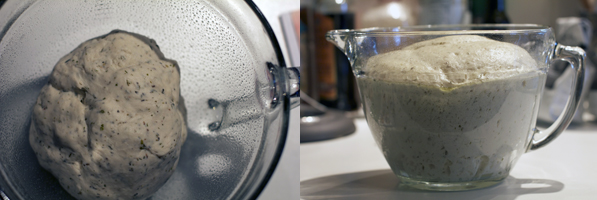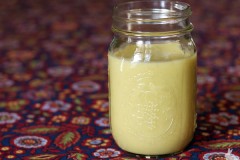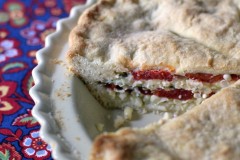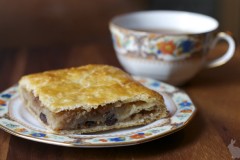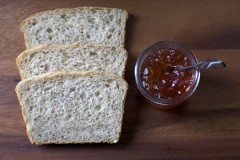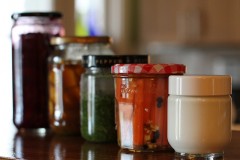Admittedly, February is probably the least sensible time for a Mid-Atlantic resident to deal with tomatoes. Still, with pretty much everyone I know battling some form of cold/flu/sinus travesty and I myself popping cough drops and drinking mugs of broth for the past couple weeks, I started daydreaming about DIY instant soups free of questionable additives and shocking sodium content. Being a vegetarian, these thoughts leaned towards vegetable-based options rather than chicken and noodles, and the dehydrator I was gifted over the holidays this year suggested all kind of possibilities.
The best course, it seemed to me at the time, would be to start with dehydrated tomato powder to which I could add other seasonings. The local grocery’s produce section offered a depressingly unripe and waxy selection of the fruit, so I settled on some decent-looking plum tomatoes, figuring I’d at least get the most flesh for my dollar that way. I swallowed the $2.29/lbs. price tag; it would have been $3.99/lbs. if I had selected organic fruit.
I cored and de-seeded (but did not peel) two pounds of tomatoes, slicing them in 1/4-inch rings and fitting about a pound per tray in my dehydrator. Unlike the garlic drying, the smell that filled the kitchen was much less overwhelming. Ten hours later, I had a lovely looking pile of perfectly crisp tomato slices, and after popping most of them in the blender I had…1/4 cup of tomato powder. In my heart I had known all along this was an August project, when tomatoes are available by the bushel for under $20. Clearly the math on this DIY project was not really going to work out at this winter rate. I would be much better off buying it.
However, the concentrated flavor of the powder was amazing and not to be wasted. I can see adding this to all kinds of soups, sauces, dips, and dressings, kneading it into bread dough, or sprinkling it on top of pizza along with some garlic powder. And for those concerned about acidic tomatoes and BPA in packaging, it’s a great way to store a large quantity of the former within a small pantry footprint and have “just add water” access to everything from tomato paste to tomato sauce and juice.
Do you use tomato powder? What are your favorite applications?
Tomato Powder: The Method
Wash, core, slice, and de-seed plum tomatoes. Spray dehydrator racks lightly with oil and evenly spread out slices. They can touch but should not overlap. Dehydrate at 135°F for five hours and flip slices. Continue dehydrating until completely crisp, about five hours more.
Allow slices to cool completely and check again to make sure they are completely crisp. Then, using a blender or coffee grinder, reduce the slices to a powder. If grind is uneven, sift powder though a mesh sieve and regrind larger chunks. Store in an airtight glass container in a cool, dark place. Rehydrate portions of the powder to desired consistencies as needed.
The Verdict
I loved the tomato powder itself: versatile, storage-efficient, and delicious. However, it doesn’t make sense to DIY this project in any quantity without access to fresh local tomatoes in bulk. Until then, I will either wait or purchase powder online, where even organic options are available for about $20 per pound.
DIY Instant Tomato Bell Pepper Soup
Note: I experimented with both instant nonfat dry milk and dry whole milk and–when powders were pre-mixed–couldn’t prevent either milk type from curdling upon heating. Non-dairy powdered coffee creamer did work, but a read through the ingredient list pretty much negates the DIY effort if keeping hydrogenated oils and artificial additives out of the soup is a motivator. However, using only the vegetable powders made for such a rich and tasty broth, I didn’t find myself missing the cream.
All of the vegetable powders and dried herbs can be made using a dehydrator at home. Diced onion and rings of de-seeded red bell pepper can be dehydrated and powdered in a similar fashion to the tomato powder above.
2 tablespoons tomato powder
1 teaspoon red bell pepper powder
1/4 teaspoon onion powder (or more to taste)
salt and pepper to taste
pinch of dried dill, parsley, or basil (optional)
1 1/4 cups boiling water
To make single-serving portions, measure vegetable powders and spices in proportions above into sealable plastic bags. When ready to serve, add 1 1/4 cups boiling water and stir until all powder is dissolved.
This recipe and post were created for my “DIY vs. Buy” column on Serious Eats.

